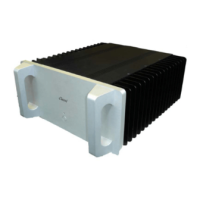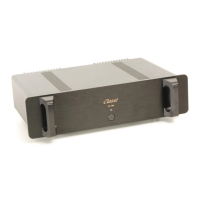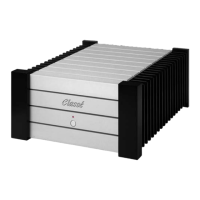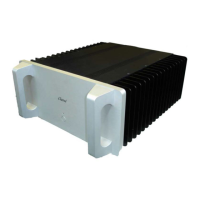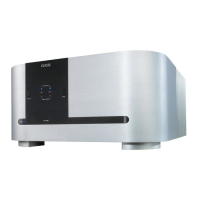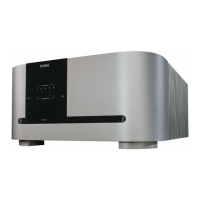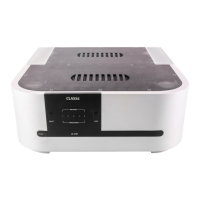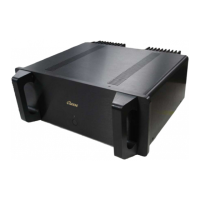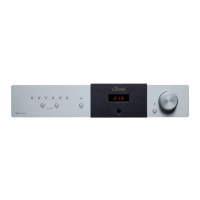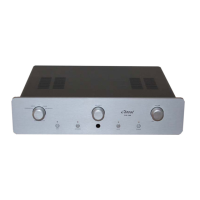Do you have a question about the Classe Audio CA-M400 and is the answer not in the manual?
Explains the CE mark and its significance for product compliance in the EU.
Details compliance with FCC rules for digital devices and potential interference.
Lists essential safety instructions for operating the apparatus safely and correctly.
Discusses the importance of professional installation for optimal performance.
Instructions for carefully unpacking the power amplifier and retaining packing materials.
Advice on positioning the amplifier for optimal performance and heat dissipation.
Emphasizes the need for adequate clearance around the amplifier for heat dissipation.
Mentions rack mount kits and custom cabinetry for specialized installations.
Instructions to note and record the amplifier's serial number for future reference.
Encourages users to fill out and mail the warranty registration card.
Explains factory voltage settings and warnings about incorrect voltage operation.
Describes the initial performance improvement period and break-in time.
Encourages users to read the manual for optimal use and benefits.
Details the optimized analog amplification stages developed over years of continuous refinement.
Explains the fine-tuning process using subjective listening tests to ensure musical results.
Highlights the benefits of refined designs and high-quality parts for long-term reliability.
Describes protection circuits designed to safeguard the amplifier and loudspeakers from fault conditions.
Explains the function of the standby button and the meaning of its LED indicator states.
Describes the use of the Select button for configuration and system control.
Details the function of channel LEDs for input selection and fault indication.
Explains the use of the Mode button for configuration and system control.
Explains the benefits and pin assignments of balanced audio inputs.
Details the common RCA input and its limitations compared to balanced connections.
Explains the binding posts for speaker connections and the concept of bi-wiring.
Introduces CAN-Bus ports for future control and communication applications.
Explains the use of mini-jacks for IR remote control integration.
Describes DC trigger jacks for remote turn-on and standby control.
Details the DB-9 connector for software updates and external system control.
Describes the AC mains power input and the location/function of the AC mains fuse.
Guides the user through unpacking, placement, and AC connection steps.
Explains how to select between balanced and single-ended input modes using buttons.
Details setting turn-on delays and assigning amplifier IDs for multi-amp systems.
Introduces CAN-Bus, its benefits, and shared features like configuration and operation.
Details required hardware like Delta Series products, cables, and terminators for CAN-Bus setup.
Illustrates CAN-Bus connection diagrams and explains touchscreen navigation.
Covers settings for naming, brightness, standby, and status monitoring.
Explains global brightness and standby settings for the entire system.
Details features like PlayLink exclusive to certain Delta series models.
Describes the PlayLink feature for automatic input switching with disc players.
Covers Amp Info for temperature sensors and Event Log for protection circuit events.
Provides instructions on how to clean the amplifier's cabinet using specific materials.
Addresses scenarios with no sound, lit LEDs, or blinking red LEDs indicating faults.
Explains potential causes and solutions when the amplifier repeatedly shuts down.
Provides detailed steps for diagnosing and replacing a blown AC mains fuse.
Covers troubleshooting steps for flashing Standby and Channel LEDs.
Lists power output, frequency response, and signal-to-noise ratio details.
Details distortion levels, voltage gain, sensitivity, and input impedance.
Specifies power consumption ratings and mains voltage requirements.
Provides the physical dimensions and shipping/net weight of the amplifier.
| Brand | Classe Audio |
|---|---|
| Model | CA-M400 |
| Category | Amplifier |
| Language | English |
